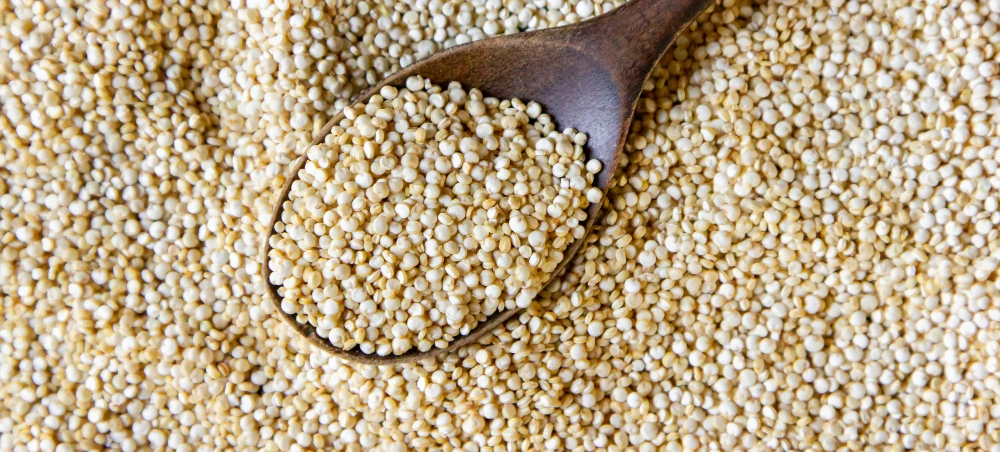Amaranth – a natural way to regenerate and phytoremediate soil from heavy metals
nr katalogowy: 153167
10.15199/2.2025.3.2
Streszczenie
Amarantus,znany również jako szarłat,uprawiany na nasiona, oprócz przeznaczenia na cele spożywcze, możekorzystnie wpływać na jakość biologiczną gleby i wykazywać duży potencjał fitoremediacyjny. Jego uprawa stymuluje rozwój mikroorganizmów glebowych i jednocześnie zwiększa ich aktywność enzymatyczną, co przyczynia się do regeneracji i poprawy żyzności gleby. Ponadto amarantus wykazuje zdolność do akumulacji metali ciężkich, co czyni go skutecznym narzędziem w rekultywacji terenów zanieczyszczonych. Dzięki tym właściwościom może znaleźć zastosowanie zarówno w rolnictwie regeneracyjnym, jak i w ochronie środowiska.
Abstract
Soil is an organic-mineral formation whose formation and properties depend largely on biological processes. Microorganisms are an extremely important living element of the soil environment a key role in biochemical processes affecting health, soil fertility and fertility. Understanding the role of soil microorganisms, which constitute an invaluable indicator of the biological quality of the soil, allows for sustainable management of its resources. That’ s why he strives more and more often to soil biologization, i.e. increasing, among other things, their number and activity beneficial microorganisms, which is consistent with the principles of agriculture regenerative, which focuses on improving structure, health and its natural ability to self-regenerate. Implementing such sustainable agricultural practices is crucial to resource recovery natural in the future.
Słowa kluczowe / Keywords
Bibliografia
[1] Akinci S., A. Özdemir. 2020. Phytoremediation potential of different plants for heavy metals in contaminated soils. Environmental Toxicology and Chemistry, 39(3), 489-497.
[2] Bashan Y., G. Holguin. 2002. Tytuł: Amaranthus as a plant for improving microbial biomass and soil enzyme activities in arid ecosystems. Biology and Fertility of Soils, 36(2), 145-151.
[3] Brodowska M.S., R. Brodowski, B. Skwaryło- Bednarz. 2012. Pobieranie miedzi, cynku, manganu i żelaza przez Amaranthus cruentus L. jako roślinę energetyczną w zależności od odmiany, rozstawy i nawożenia. Autobusy – Technika, Eksploatacja, Systemy Transportowe, 10, 176-180.
[4] Ghosh M., S.P. Singh. 2005. A review on phytoremediation of heavy metals and utilization of its residuals. Applied Ecology and Environmental Research, 3(1), 1-18.
[5] Kumar A., S. Singh. 2015. Influence of Amaranthus cultivation on microbial diversity and enzymatic activities in soil. Soil Biology and Biochemistry, 84, 121-128.
[6] Nawaz A., S. Ahmed. 2017. Effects of Amaranth (Amaranthus spp.) on soil microbial population and enzymatic activities. Journal of Environmental Biology, 38(2), 265-272.
[7] Rohman M.S., S. Vohra. 2013. Phytoremediation of heavy metals: Mechanisms, plant species and applications. Environmental Science and Pollution Research, 20(3), 1592-1603.
[8] Skwaryło-Bednarz B. 2008. Ocena właściwości biologicznych gleby pod uprawą szarłatu (Amaranthus cruentus L.). Acta Agroph., 12 (2), 162, 527-534.
[9] Skwaryło-Bednarz B. 2008. Reaction of amaranthus to pollution of soil with copper. Ecol. Chem. Eng., 15, 9, 979-983.
[10] Skwaryło-Bednarz B. 2012. Influence of contamination of soil with copper on the activity of dehydrogenases in areas where amaranthus is cultivated. Ecol. Chem. Eng. A, 19, 1-2, 155-160.
[11] Zhang Y., F. Wang, C. Li. 2019. The effect of amaranth on microbial community structure and soil enzyme activity under different fertilization practices. Applied Soil Ecology, 142, 31-38.
[12] Zhao F.J., S.P. McGrath S.D. Young. 2003. Phytoremediation of heavy metal contaminated soils: Advances and new directions. Environmental Science & Technology, 37(5), 2266-2275.
